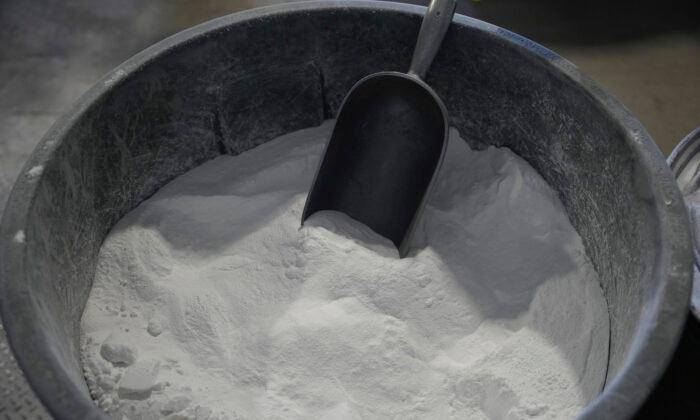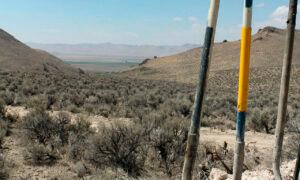The world’s largest deposit of lithium was recently discovered in the southwest United States.
According to a new study in Science Advances on Aug. 31, the vein of lithium deposits is located along the Nevada-Oregon border, with potentially major implications for the U.S. electric vehicle (EV) industry.
Volcanologists and geologists from Lithium Americas Corporation, GNS Science, and Oregon State University reported the new findings.
The McDermitt Caldera deposit is about 28 miles long and 22 miles wide, containing around 20–40 million metric tons of lithium, dwarfing the combined deposits in Chile and Australia.
Demand for Lithium Skyrockets Worldwide
Demand for the metal has been skyrocketing due to growing demand for renewable energy and EVs powered by lithium batteries around the world.“If you believe their back-of-the-envelope estimation, this is a very, very significant deposit of lithium,” Anouk Borst, a Belgian geologist at KU Leuven University, told Chemistry World.
“It could change the dynamics of lithium globally, in terms of price, security of supply and geopolitics.”
The auto industry is facing a potential lithium battery shortage and is racing to secure supplies, as any shortfall would disrupt plans to increase EV sales to tens of millions a year.
Lithium output is expected to triple world over the next decade, as demand for EVs begins to exceed supply, as each battery requires on average about 17 pounds of the metal, plus cobalt, nickel, and other rare earth minerals.
In recent years, increasing tensions with China and government environmental restrictions on lithium mining have become sensitive issues.
Over the past decade, China has dominated supplies of the resource, leading to policymaker concerns in Washington.
Many fear that the United States is becoming increasingly dependent on China for supplies of lithium to produce computer chips.
The recently announced lode has left some analysts optimistic that the United States could become self-sufficient in supplies of the strategically valuable mineral in the future.
Activists Lose Attempt to Halt Mining Deposits
Thomas Benson, a geologist at Lithium Americas Corporation, told the magazine that his company expects to begin mining the deposits in Nevada in 2026.The soil around the deposit is both rich in the metal and easy to separate.
The mining process will remove the surrounding clay with water and then separate out the small lithium-bearing grains from larger minerals using a centrifuge.
The clay will then be leached in vats of sulfuric acid to extract the precious mineral.
“If they can extract the lithium in a very low-energy, intensive way or in a process that does not consume much acid, then this can be economically very significant,” said Mr. Borst.
“The U.S. would have its own supply of lithium, and industries would be less scared about supply shortages.”
The deposits are also mostly concentrated in one spot at the southern tip of the pass, thus limiting the environmental impacted by mining.
Critics of the lithium-extraction process complain about the large amounts of CO2 emitted from the process, which can contaminate groundwater with dangerous heavy metals while using tons of fossil fuels, reported The New York Times.
Meanwhile, activists have been trying to block mining in the area, claiming it would contaminate the environment, while some Native American tribes have joined in support, as the region is considered sacred.
A federal court then struck down their complaint in July, as mining operations started to break ground this week.
Full extraction of the lithium deposits could start as early as 2026, according to the report.
However, some worry that the Biden administration may still put a dent in these plans, especially after the White House terminated oil drilling leases in Alaska’s Arctic National Wildlife Refuge.
After hearing the news, James Hutton, a former assistant secretary of veterans affairs under President Donald Trump, wrote in a post on social media, “Let’s hope this is true—and that the Biden administration doesn’t order it closed.”







